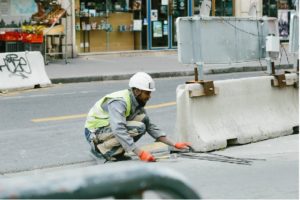
GPR serves a few different functions that help make work easier and safer.
Whether you’re a novice or a veteran with concrete, it is always important to know how GPR works. GPR (ground penetrating radar) gathers data from underground areas and can even look through concrete. Along with that, it can analyze any data that it gathers.
GPR has a lot of perks. One of these perks is the ability to find underground utilities. Utility lines can provide homes and businesses with water, cable television, internet service, and gas, and electricity. By using GPR, you can detect these utilities so that you don’t cut through them by accident when you start working. GPR also lets you avoid damaging rebar, which is critical for preserving the structural integrity of the surface on which you are working. Finally, GPR is useful for finding post-tension cable and figuring out the extent of the cabling so that you know how to work more safely with your work crew.
GPR serves a few different functions that help make work easier and safer.
The Basics
To penetrate the ground/concrete, a high-frequency radio signal gets sent to the surface. This signal bounces right back to the receiver. After that, the data gets recorded and stored inside a computer. This computer estimates how much time the signal pulses. To be more specific, it measures the time it took for the signal to bounce back after it fired. The pulse tells workers how deeply it traveled into the ground and if any targets were hit in the process. A computer is used to capture this data and interpret that data for the user.
Data Collection
There are different types of GPR that are used for the different object found underground. The type of GPR needed depends on how large the target is, and how deep in the ground it is. Signals from the ground penetrating radar bounce back and forth between the receiver and the target as many as one thousand times every second. The user can choose to either analyze the data while still in the field or wait until later to get a more accurate analysis. Accurate data analysis is affected by certain outside factors, including the type of soil and the materials through which the signals traveled.
Data Collection In Concrete
Ground-penetrating radar is used most commonly to find targets that are trapped in concrete. GPR can locate and scan these targets, which helps to determine how thick the concrete is. Afterward, either a two-dimensional or three-dimensional map of the area is created.
Concrete Visions Will Get The Job Done Right
Concrete Visions has been working with clients for over 25 years. Our G&M Services installers are certified with the industry’s major firestop product manufacturers. As part of our firestop service, we can assess abnormal field conditions and, with the manufacturer’s technical support assistance, provide engineering judgments in a timely fashion to comply with contract specifications. Our Field Mechanics undergo ongoing training, including mandatory monthly safety meetings, weekly Toolbox Talks where safety and equipment information is shred, and trainings on safe work standards and safety best practices.
Visit our website to see how we can be of service to you, and follow us on Facebook, Twitter, and Linkedin.
